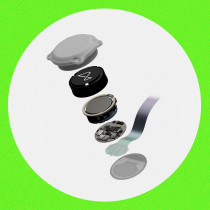Consumer Robotics: Hacking Towards the Future of Electro-Mechanical Companionshi
Source: AnywhereYouGo
Target has become one of my favorite places.
Just the other night, my wife and I were walking around looking for nothing in particular, when I was drawn to the clearance toys section. At the top of one of the aisles almost out of my reach, was a little robotic dog that I had seen before, but ignored due to the outrageous price. Fortunately for you, our dear readers, the price of this robodog had dropped considerably and I was uncontrollably compelled to buy him.
The dog in question is called i-Cybie, co-developed by SilverLit Electronics and Tiger, and capable of some pretty spectacular wireless activities. Roughly the size of a small cat, i-Cybie is a plastic, battery-powered robotic dog capable of responding to IrDA commands from an included remote control. With 16 on-board motors, sound and light sensors, expansion card slot, different moods, and the ability to wander aimlessly around your house just like a real dog, sort of, i-Cybie is one of the latest but definitely not the last consumer robotic device to be put on the market.
Many of you may be familiar with one of Tiger’s more popular interactive toys, Furby, or one of the countless others including Poo-Chi, Meow-Chi, and Shelby. I have probably owned three Furbies, and they have all ended up as chew toys for my real dog within a few minutes of listening to their annoying ‘Furbish’ chatter. But the fact remains, consumer robotics are becoming increasingly more popular, intelligent, and affordable. With prices ranging from $5 to $25,000 USD, there is an electronic companion in any wireless developer’s price range.









































































